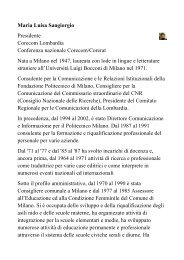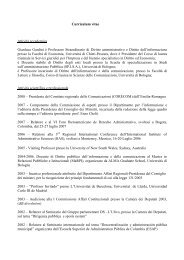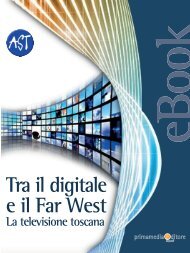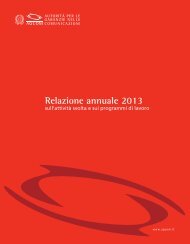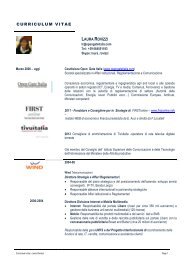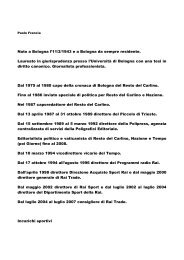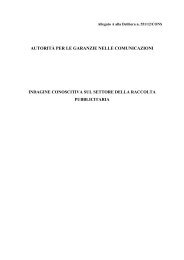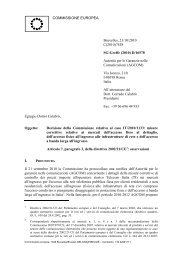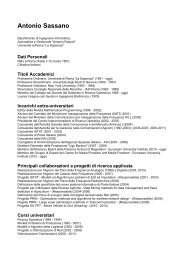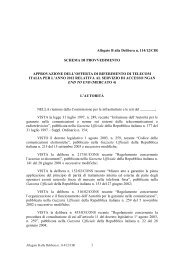Building Competitiveness and Business Performance with ICT
Building Competitiveness and Business Performance with ICT
Building Competitiveness and Business Performance with ICT
- No tags were found...
You also want an ePaper? Increase the reach of your titles
YUMPU automatically turns print PDFs into web optimized ePapers that Google loves.
The ResearchModel <strong>and</strong>Glossary of KeyTermsBased on the results of a survey completedby over 225 technology leaders, representingfirms from North America, Europe <strong>and</strong> the Asia-Pacific region <strong>and</strong> from a variety of industrialsectors, this report discusses the potentialbusiness value of three important technologies,namely mobility, cloud-based services,<strong>and</strong> unified communications <strong>and</strong> unifiedcommunications <strong>and</strong> collaboration platforms(collaboration tools). The work focuses on thefactors – what we call “key business enablers”– than enable organizations to achieve higherreturns on their investments in these threetechnologies.Figure 1 represents the research model <strong>and</strong> thetypes of data that were collected. The modelbuilds on the most relevant <strong>and</strong> latest academicliterature about the relationship betweentechnology <strong>and</strong> business performance. Inaddition to collecting survey data, severalChief Information Officers of leading Europeanmultinationals were interviewed. Throughoutthis report, their insights into how they usetechnology to enhance business performance<strong>and</strong> competitiveness are summarized in shortcase studies, titled “Real Successes.”Several key terms related to the researchmodel are used in this report to describe theresearch findings. Below, they are summarizedfor easy reference. In subsequent sectionsbeginning <strong>with</strong> the title “Definition,” the termsare described in greater detail.Three types of information <strong>and</strong>communication technologies (<strong>ICT</strong>)Mobility refers to the usage of portable devicesconnecting to the Internet through mobiletelephone networks. Portable devices refer toportable computers: notebooks, netbooks,laptops, Ultra Mobile PC-UMPCs, tablet PCs; aswell as portable devices such as Smartphones<strong>and</strong> customized PDA phones.Cloud-based services have the followingcharacteristics: pay per use; external resourcepooling; rapid scalability; flexibility; <strong>and</strong>ubiquitous network access. They includesoftware-as-a-service; platform-as-a-service;infrastructure-as-a-service; <strong>and</strong> businessprocess-as-a-service.Collaboration tools merge multiple toolsincluding instant messaging, conferencing,email <strong>and</strong> unified messaging to teamcollaboration <strong>and</strong> voice calling <strong>with</strong> presencebehind a single user interface – easily accessiblefrom almost any device <strong>and</strong> from virtuallyanywhere – to increase personal productivity<strong>and</strong> business efficiency in ways no single toolever could before. collaboration tools mayconsist of tele-presence, web conferencing,messaging, <strong>and</strong> voice.High Investors <strong>and</strong> Low InvestorsOne of the key distinguishing variables that wasexamined was the percentage of the total <strong>ICT</strong>budget that a firm spent on each of the threetypes of technology: mobility, cloud-basedservices; <strong>and</strong> collaboration tools.• High Investors in Mobility: firms that spentmore than 10% of their total <strong>ICT</strong> budgeton Mobility;• High Investors in Cloud-based services:firms that spent more than 10% of theirtotal <strong>ICT</strong> budget on Cloud-based services;• High Investors in collaboration tools: firmsthat spent more than 10% of their total <strong>ICT</strong>budget on collaboration tools; <strong>and</strong>• Low Investors: firms that spent less than10% of their total <strong>ICT</strong> budget on a giventype or types of technology.It is important to note that investmentsin mobility, cloud-based services, <strong>and</strong>collaboration tools are not mutually exclusive,<strong>with</strong> some solutions involving one, two or evenall three technologies.Strong <strong>Business</strong> EnablersThe research focused on four key businessenablers. The results reveal that strong businessenablers are critical to increasing the likelihoodof high performance <strong>and</strong> mitigating the risks ofwasting investments in <strong>ICT</strong>. The enablers are:• Strong business involvement: firms<strong>with</strong> sufficient participation by businessunit managers <strong>and</strong> senior executives intechnology investment <strong>and</strong> managementdecisions;• Sufficient technology-focused talent:firms <strong>with</strong> sufficient access to peoplewho can perform well in predominantlytechnical activities;• Sufficient management-focused talent:firms <strong>with</strong> sufficient access to peoplewho can perform well in predominantlymanagerial activities; <strong>and</strong>• Mature digitized platform: firms <strong>with</strong>efficient levels of st<strong>and</strong>ardization <strong>and</strong>sharing across their organization in termsof technology, business processes <strong>and</strong>data.High Performers <strong>and</strong> Low PerformersAt the end of the day, business leaders want toknow what the best performing firms are doing<strong>and</strong> how they are outperforming their peers.The research focused on 20 performanceindicators, representing three general aspectsof business performance: business processperformance, agility, <strong>and</strong> organizational change<strong>and</strong> performance. High performers are firmsthat perform better than average <strong>with</strong> regardsto a single performance indicator or a set ofperformance indicators.Figure 1: Survey data were collected on firm investments <strong>and</strong> uses of technology, key enablers, <strong>and</strong> a variety ofperformance indicators.Firm CharacteristicsINvestments in <strong>ICT</strong>What types of <strong>ICT</strong>:• Mobility• Cloud• Unified Communications <strong>and</strong>Collaboration (UCC)+xkey enablers &constraints<strong>Business</strong> InvolvementAccess to Talent• Management-focused• Technology-focusedDigitized Platform Maturity• <strong>ICT</strong>• <strong>Business</strong> Process• Data=<strong>Business</strong> Process <strong>Performance</strong>Agilityproductivity &competitvenessOrganizational Change &<strong>Performance</strong>6 INSEAD eLab <strong>ICT</strong> Report




